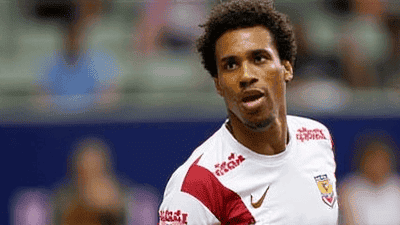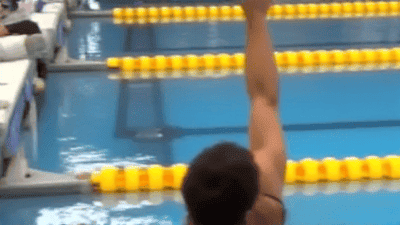
The Unseen Sacrifices: What Pro Athletes Really Go Through to Reach the Top
Professional athletics captivates millions, presenting a thrilling spectacle of peak human performance, extraordinary talent, and inspiring victories. Yet, beneath the glittering facade of fame and fortune lies a seldom-seen reality: a profound journey defined by relentless dedication and immense personal sacrifice. The pursuit of sporting excellence is far more than physical prowess; it demands an unwavering commitment that touches every aspect of an athlete's life, often from a very young age. This article delves into the intricate, often brutal, mechanisms underlying this demanding path.
The journey to elite professional status is a crucible, forging individuals through an intense gauntlet of physical, mental, and emotional challenges. Its importance extends beyond individual athletes, impacting sports science, psychology, and even public health, by setting benchmarks for human endurance and resilience. Current developments in athlete welfare increasingly acknowledge the multifaceted impacts of this demanding lifestyle, highlighting issues like burnout, mental health, and post-career transitions. The intense physical training, stringent dietary regimens, constant travel, and pervasive media scrutiny are just components of a lifestyle few can fully grasp. What impact would it have on our understanding or practice of human performance and well-being if we failed to fully comprehend the profound and often hidden sacrifices inherent in achieving professional athletic greatness?
The Body as a Battleground

Chronic Pain and Injury Resilience
Professional athletes push their bodies to the absolute limit, treating their physical form as both their primary tool and their most vulnerable asset. This relentless pursuit of peak performance inevitably leads to a high incidence of chronic pain and injuries. Microtrauma, the accumulation of tiny, often imperceptible tissue damage from repetitive movements and high-impact activities, is a foundational mechanism. Over time, these microtraumas can escalate into debilitating conditions like tendinopathies (chronic inflammation or degeneration of a tendon, e.g., Achilles tendinopathy in basketball players), stress fractures (tiny cracks in a bone caused by repetitive force), or osteoarthritis (a degenerative joint disease prevalent in retired contact sport athletes). The psychological component of pain resilience is crucial; athletes often develop a high pain tolerance, enabling them to "play through" injuries, a double-edged sword that can lead to further damage. For instance, a soccer player with a minor hamstring strain might continue playing, risking a full tear that sidelines them for months. Recovery is a full-time job, involving rigorous physiotherapy, ice baths, and specialized rehabilitation exercises, often isolating the athlete from their team. This constant cycle of injury, recovery, and pushing boundaries transforms the body into a battleground where victories are often hard-won against physical limitations.
The Mind's Marathon
Navigating Pressure and Social Isolation
Beyond the physical demands, the psychological and emotional toll on professional athletes is immense, representing a true "mind's marathon." Athletes face extraordinary pressure to perform consistently, not only from coaches, teammates, and management but also from an often-unforgiving public and media. This constant scrutiny can lead to performance anxiety (intense fear or worry about one's performance), depression, and burnout. The concept of "performance identity" means an athlete's self-worth often becomes intrinsically linked to their sporting success, making failures particularly devastating. Moreover, the rigorous training schedules, frequent travel, and strict lifestyle requirements often lead to significant social isolation. Young athletes may miss out on formative social experiences, while established professionals struggle to maintain personal relationships outside their immediate sporting circle. Family life, particularly during seasons, becomes a logistical challenge, with athletes often spending months away from loved ones.
Research indicates a substantial prevalence of mental health issues among athletes. A study by the International Olympic Committee found that up to 35% of elite athletes experience symptoms of depression or anxiety. This table illustrates typical career durations in different professional sports, highlighting the compressed window of opportunity and the intense pressure to succeed within it.
| Sport | Average Career Length (Years) | Peak Performance Age Range |
|---|---|---|
| NFL (American Football) | 3.3 | 24-28 |
| NBA (Basketball) | 4.5 | 25-30 |
| MLB (Baseball) | 5.6 | 27-31 |
| Premier League (Soccer) | 8-10 | 24-30 |
| Tennis (Singles) | 5-7 | 22-29 |
The relatively short average career lengths emphasize the extreme pressure to maximize earnings and achievements in a limited timeframe. This pressure is compounded by the financial precarity many aspiring athletes face; only a tiny fraction of those who dedicate their lives to a sport achieve significant financial success. The mental fortitude required to navigate these pressures, overcome setbacks, and maintain motivation despite isolation is arguably as critical as any physical attribute.
Beyond the Game: Life's Missed Chapters

Sacrificing Normality for Greatness
The path to professional athletics demands sacrifices that extend far beyond the playing field, often forcing individuals to forgo a "normal" life and common developmental experiences. Early specialization, where children focus exclusively on one sport from a young age, is a pervasive practice. While it can hone specific skills, it often means sacrificing a broad educational foundation, diverse social experiences, and the development of varied interests outside of sports. Many athletes miss out on traditional schooling, relying on tutors or online education, which can lead to gaps in general knowledge or a lack of preparation for a post-athletic career. The financial risks are also substantial; despite the high earnings of top-tier athletes, the vast majority of professionals, particularly in less glamorous sports or lower leagues, earn modest salaries. Their careers are often precarious, dependent on performance, injury avoidance, and team needs. When careers end, whether due to injury, age, or lack of opportunity, many athletes face significant challenges in transitioning to civilian life. They may lack transferable skills, struggle with identity loss, and experience financial instability, highlighting the profound opportunity cost of their singular pursuit of greatness.
Conclusion
The journey of a professional athlete, while often glamorized, is fundamentally built upon an unyielding bedrock of unseen sacrifices. This article has illuminated the core tenets of this demanding path, from the body's transformation into a battleground of chronic pain and injury to the mind's grueling marathon of pressure, scrutiny, and social isolation. We have seen how the relentless pursuit of peak performance dictates a lifestyle far removed from normality, often demanding the forfeiture of conventional education, diverse social experiences, and long-term financial stability for a precarious, fleeting period of sporting excellence. These profound physical, mental, and lifestyle concessions underscore that athletic greatness is not merely a product of innate talent, but a testament to extraordinary resilience and an unwavering commitment to a singular, all-consuming objective. Understanding these sacrifices is crucial to appreciating the true cost of sporting triumph and the immense human endeavor it represents.
Looking ahead, the landscape of professional sports is evolving, driven by an increasing recognition of athlete holistic well-being. Future development trends will likely focus on enhanced mental health support, comprehensive post-career transition programs, and more nuanced approaches to early athletic development that balance specialization with broader personal growth. Macro scientific policies are pushing for greater research into injury prevention, rehabilitation, and the long-term health implications of high-performance sport. Technological iterations in biomechanics, sports psychology, and data analytics will continue to optimize training methodologies, potentially reducing physical strain while maximizing performance. Furthermore, interdisciplinary integration—combining insights from medicine, psychology, nutrition, and sociology—will be vital in creating more sustainable and humane pathways for aspiring athletes. It is imperative that continuous research and advocacy prioritize not just the spectacle of sport, but the lasting well-being of the individuals who dedicate their lives to it, ensuring that future generations of athletes are supported not only in their quest for greatness but also in their journey through and beyond their playing careers.
Frequently Asked Questions (FAQ)

Q: Is the financial reward always worth the immense sacrifices professional athletes make? A: The perception that all professional athletes earn astronomical sums is a common misconception, particularly fueled by media focus on top-tier stars in popular sports like basketball or football. While a select few do achieve immense wealth, the vast majority of professional athletes, even those competing at elite levels in less high-profile sports or in minor leagues, earn modest salaries, often barely above the poverty line, especially early in their careers. For instance, in sports like minor league baseball or professional soccer in lower divisions, players might earn less than the average national income, while facing all the same physical and mental demands as their famous counterparts. Furthermore, a significant portion of their income might be spent on trainers, agents, specialized equipment, and travel, particularly for individual sports. The career length is often short, averaging just a few years, meaning the window to earn is compressed. Many retire with limited savings, particularly if injuries cut their careers short or they didn't reach the upper echelons. So, while the dream of a lucrative contract is a powerful motivator, the reality for most is a career fraught with financial precarity, high costs, and a constant struggle to make ends meet, making the "worth" of the sacrifice a highly individual and often unfulfilled aspiration. The psychological return, such as the thrill of competition or achieving a lifelong dream, often outweighs the direct financial benefits for many.
Q: How do athletes manage the constant pressure and intense scrutiny they face from the media and the public? A: Managing the relentless pressure and intense scrutiny is a critical skill for professional athletes, often requiring a multifaceted approach involving psychological resilience, strategic coping mechanisms, and robust support systems. Psychologically, athletes train to develop mental toughness, which includes attributes like focus, emotional regulation, and self-belief. Many work with sports psychologists to develop techniques such as visualization (mentally rehearsing successful performance), mindfulness (staying present and non-judgmental), and cognitive restructuring (challenging negative thought patterns). Strategically, athletes learn to create mental boundaries, separating their public persona from their private self, and to disengage from social media or critical news outlets during high-pressure periods. Some develop a "performance ritual" to help manage pre-competition anxiety. Crucially, a strong support system is indispensable. This typically includes a close-knit circle of family and trusted friends who provide emotional grounding, coaches who offer consistent feedback and belief, and increasingly, professional mental health practitioners within their teams or organizations. These resources help athletes process setbacks, celebrate successes, and maintain perspective amidst the often-overwhelming external pressures. Ultimately, it's a continuous process of adaptation, self-awareness, and seeking appropriate help to navigate the unique challenges of a life lived in the public eye.








